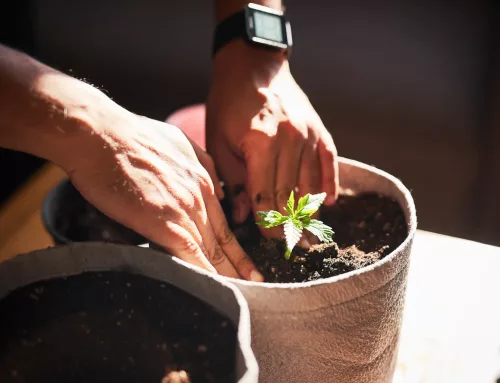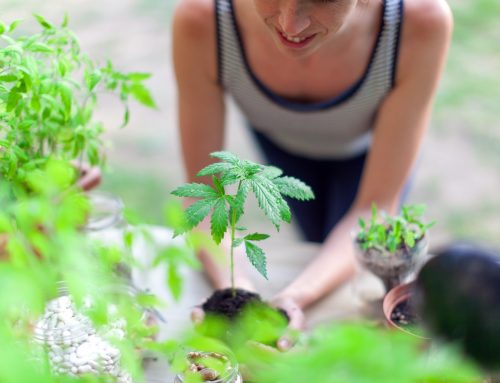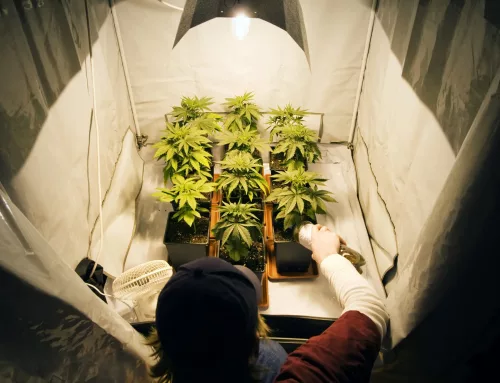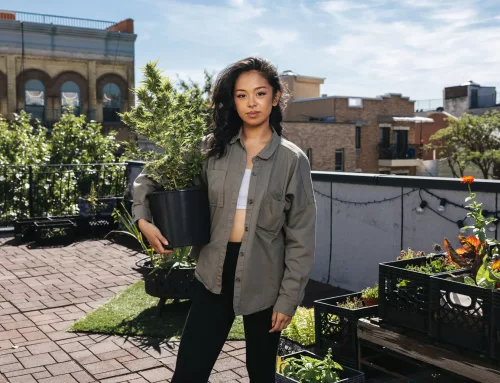Planting germinated cannabis seeds is one of the hardest steps in establishing your grow.
Start too early, and your seedlings may not be able to survive the whims of Mother Nature. Plant too late, and your seedling could suffocate and die before it ever sees soil.
Planting at the right time is crucial for setting your cycle up for success.
How Long Does Germinating Cannabis Take?
Germination is the process where a seed sprouts and begins to grow.
It begins with the absorption of water, which activates enzymes that start the growth process. The seed coat splits, and the embryonic root (often called the “taproot”) emerges.
For cannabis seeds, germination typically takes 1-4 days.
Various factors influence the germination time, including seed quality, moisture levels, and temperature. In some cases, it may take up to a week, especially in colder climates or with older seeds.
Optimal conditions will speed up the process, increasing your success rate.
Understanding the germination process and knowing the signs of when to plant cannabis seeds can make all the difference in your cultivation efforts.
Avoid Germinating Cannabis Seeds Directly in Substrate
While it might seem convenient to germinate seeds directly in the soil or other substrates, this method has several drawbacks:
- Shock: One of the main reasons to avoid this approach is the risk of shock. The delicate roots are prone to shock and need to be “babied” until they can stand on their own. If your soil is too hot—rich in nutrients—or fluctuates in temperature and moisture content, your seedling may be unable to withstand the shock of these changes, which can stunt growth or even kill your baby seedling.
- Pathogens: Soil and other organic materials can harbor pathogens that threaten young seedlings when they’re most susceptible to diseases. Seedlings that have a chance to sprout and establish prior to coming into contact with these threats stand a better chance of surviving.
- Pests: Seedlings are extra vulnerable in their early days as they establish roots. Older, mature plants are better equipped to ward off and sustain insect and pest damage, but young seedlings can become crippled by pests. This includes larvae that may be present in the growing media eating at the roots, as well as flyers and crawlers snacking on your plants’ young leaves.
- Monitoring Progress: It’s harder to monitor the progress of seed germination directly in the substrate. When seeds are germinated in a controlled environment, such as between moist paper towels or in a germination station, it’s easier to observe root development so you can know when your cannabis seeds are ready to plant.
When to Plant Your Cannabis Seeds
The optimal time to plant cannabis seeds is when the seed has an opened shell and a healthy white taproot ~1/2 inch long.
This is usually a sign that the seed is ready to be moved to its first pot.
You’ll want to make sure you plant before the seeds start to grow into your germination medium (i.e. the roots start to grow through your paper towel).
How to Know When to Plant Your Germinated Cannabis Seeds
There are a few signs to look for that can help you determine the right time to plant your germinated cannabis seeds:
- Opened Shells: The seed shells are open, indicating that germination has occurred. This is the first sign that the seed is ready to be planted.
- Taproot Expansion: The root has expanded beyond the shell, showing signs of growth. A healthy taproot should be ~1/2 inch long.
- Time Frame: It has been 24-96 hours since the germination process began. Most seeds are ready to be planted within this time frame.
- Maximum Duration: Planting should take place within 7 days of germinating to ensure the seed is not stressed nor suffocated. Seeds that take longer to germinate may face additional challenges and might not be as vigorous, or could be prone to pathogens.
Why You Shouldn’t Rush Planting Cannabis Seeds
Patience is key when waiting for cannabis seeds to germinate. Here’s why:
- Vulnerability: Seeds are most vulnerable during germination and the early stages of growth. Premature planting can expose them to threats they are not yet equipped to handle.
- Immature Defenses: Germinated seeds have not yet developed the ability to fight off threats effectively. By allowing them to germinate fully, you give them a better chance to establish strong defenses.
- Environmental Shock: As discussed above with planting directly into your substrate, transferring seeds too early can cause shock due to changes in the environment. This shock can be detrimental to the plant’s development.
- Maintaining Vigor: The goal is to maintain the seedling’s vigor and momentum throughout its growth. Premature planting can lead to a weaker plant overall.
How to Plant Cannabis Seeds in 3 Steps
Once you determine that your seeds are ready, the planting process is straightforward but requires care.
- Prepare your growing medium by ensuring it is moist but not waterlogged. It’s best to water the container prior to planting and allow the soil time to drain and regulate its moisture content throughout the pot.
- Make a small hole about 1/2 inch deep in the soil or substrate. Next, gently place the germinated seed with the taproot facing downwards and cover it lightly with soil.
- Water the planted seed lightly to settle the soil around it. Avoid flooding the soil for the next day or two (depending on your environment) because you want the seedling’s roots to seek out moisture, establishing their reach throughout your container. Overwatering can cause your seedling to dampen off or die before it can get its footing. I recommend misting and/or using a dome for the first few days post-planting if you are concerned about the area drying out.
Common Mistakes to Avoid When Planting Cannabis Seeds
Whether you’re a seasoned grower or a first-timer, there are a few common mistakes you’ll want to avoid when planting your germinated cannabis seeds, including:
- Overhandling: Handle germinated seeds and young seedlings with care. Rough handling can damage the delicate roots. Additionally, gloves are recommended for sterility.
- Deep Planting: Avoid planting the seeds too deep. A depth of 1/2 inch is sufficient. Planting too deep can make it difficult for the seedling to break through the soil surface.
- Ignoring pH Levels: Cannabis plants prefer a slightly acidic pH level. Ensure the pH of your growing medium is between 6.0 and 7.0 for optimal growth.
- Hot Soil: Many soil blends come preloaded with nutrients, which can be great for mature plants, but can “burn” baby roots. Soils with a high concentration of nutrients are often referred to as “hot.” If you are germinating in a sterile, inorganic environment, you’ll want to ensure the soil you’re transplanting to is not too hot for your new babies.
Additional Tips for Planting Cannabis Seeds Successfully
- Proper Lighting: Once planted, ensure your seedlings receive the proper amount of light. Seedlings need 16-18 hours of light daily to thrive. Be careful not to give the plant too intense of light; ambient light should be good for the first 1-2 days while your seedling adjusts.
- Temperature and Humidity: Maintain a temperature range of 70-85°F (20-30°C) and humidity levels between 50-70% to create an ideal environment for your seedlings. If seedlings appear dry or thirsty, you can dome trays or individual plants as needed for higher humidity while roots establish.
- Watering: Water the seedlings lightly but consistently, starting with a light mist and gradually working up to poured-in feeds. Overwatering can lead to root rot, while underwatering can cause the seedlings to dry out.
- Nutrients: Initially, the seedlings will rely on the nutrients stored within the seed. As they grow, you can gradually introduce a nutrient mix to support the plant as it works its way through the vegetative stage.
Plant Germinated Cannabis Seeds With Success
The key to successfully planting germinated cannabis seeds is to focus on the length and color of the taproot.
A 1/2 inch or longer healthy white taproot indicates that the seed is ready to be planted.
Additionally, a light green cotyledon sprout (the first two leaves) is a good sign. Generally, your seeds will be ready for planting 3-4 days after germination.
By understanding when to plant cannabis seeds after germination, you can maximize your chances of growing healthy, robust, and happy cannabis plants.
Remember, strong cycles start with happy seedlings.
READY TO GROW YOUR OWN?
Explore Feminized Autoflower and Photoperiod Seeds
by Happy Valley Genetics to get started today.




